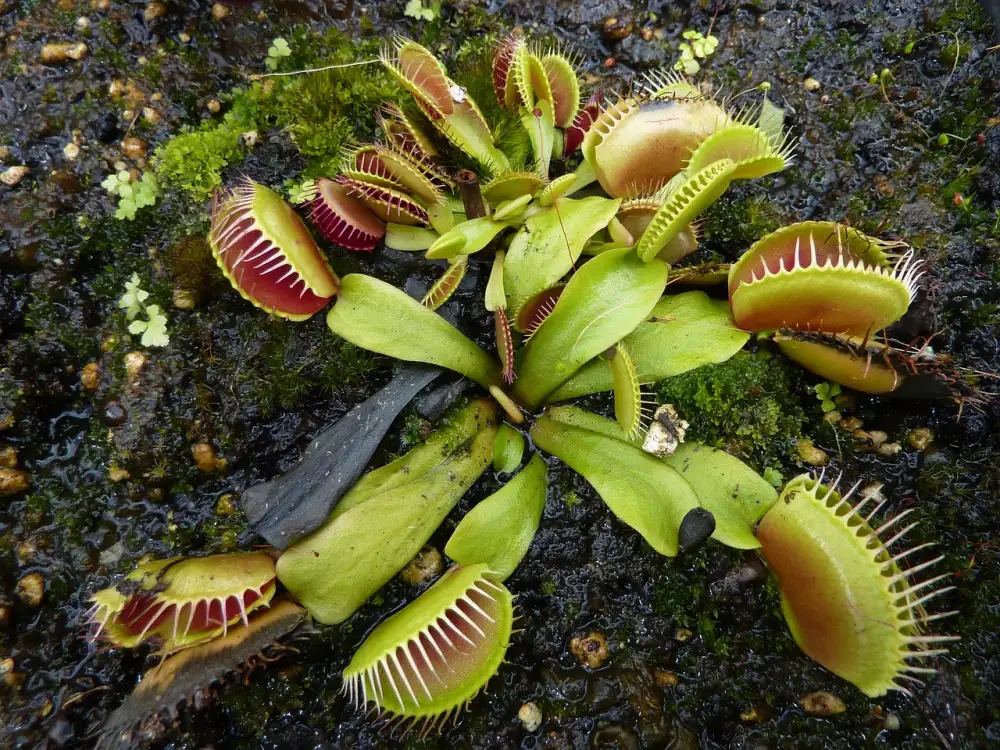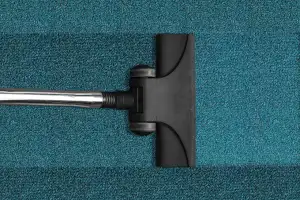Say Goodbye to Fruit Flies with the Ultimate Home Fruit Fly Trap

- Why Fruit Fly Traps are Essential for a Pest-Free Home
- Understanding the Behavior of Fruit Flies
- DIY Fruit Fly Trap: Step-by-Step Guide
- Choosing the Right Bait for Your Fruit Fly Trap
- Placement Tips for Maximum Effectiveness
- Maintenance and Cleaning of Fruit Fly Traps
- Natural Alternatives to Chemical Fruit Fly Traps
- Troubleshooting Common Issues with Fruit Fly Traps
Fruit flies can be a pesky nuisance in any home, buzzing around your kitchen and spoiling your fruits and vegetables. But fear not, because there is a simple solution: fruit fly traps. These traps are specifically designed to attract and capture fruit flies, helping you maintain a pest-free environment.
In this article, we will explore the importance of fruit fly traps in keeping your home free from these annoying insects. We will also provide you with a step-by-step guide on creating your own DIY fruit fly trap, as well as tips on choosing the right bait and proper placement for maximum effectiveness. So say goodbye to fruit flies and enjoy a clean and fresh home!
Why Fruit Fly Traps are Essential for a Pest-Free Home
Fruit fly traps are essential for maintaining a pest-free home. These tiny insects can quickly infest your kitchen, contaminating your food and spreading bacteria. Fruit fly traps provide an effective solution by attracting and capturing these pests. By eliminating fruit flies, you can prevent them from breeding and multiplying in your home. With the use of fruit fly traps, you can enjoy a clean and hygienic environment, free from the annoyance and health risks associated with these pesky insects.
Understanding the Behavior of Fruit Flies
Fruit flies, scientifically known as Drosophila melanogaster, are tiny insects that are attracted to ripe and rotting fruits and vegetables. They have a short lifespan of about 8-10 days, but their reproductive capabilities make them a nuisance in homes.
Fruit flies are highly attracted to the scent of fermenting fruits and vegetables. They lay their eggs on the surface of these foods, and within hours, the eggs hatch into larvae or maggots. These maggots feed on the decaying matter until they pupate and eventually emerge as adult fruit flies.
These pests are not only bothersome but can also contaminate your food with bacteria and other pathogens they carry on their bodies. Understanding their behavior is crucial in effectively eliminating them from your home.
Fruit flies have excellent vision and are highly sensitive to odors. They can detect even the slightest hint of fermentation from a distance. This explains why they seem to appear out of nowhere when you have overripe fruits sitting on your kitchen counter.
They are also adept at finding breeding sites. Fruit fly larvae thrive in moist environments, so it's important to identify and eliminate any potential breeding grounds such as damp sponges, dirty drains, or spilled beverages.
By understanding the behavior of fruit flies, you can take proactive measures to prevent infestations and effectively eliminate these pesky insects from your home.
DIY Fruit Fly Trap: Step-by-Step Guide
Creating your own fruit fly trap is simple and cost-effective. Follow these steps to make an effective trap:
1. Gather the materials: You will need a small glass or jar, plastic wrap, a rubber band, apple cider vinegar, dish soap, and a toothpick.
2. Pour apple cider vinegar into the glass until it covers the bottom by about half an inch.
3. Add a few drops of dish soap to break the surface tension of the vinegar.
4. Cover the glass with plastic wrap and secure it tightly with a rubber band.
5. Use the toothpick to poke several small holes in the plastic wrap. The holes should be large enough for fruit flies to enter but not too big for them to escape.
6. Place the trap near areas where fruit flies are commonly seen, such as near ripe fruits or trash cans.
7. Wait for the fruit flies to be attracted to the scent of vinegar and enter through the holes in the plastic wrap.
8. Once inside, they will drown in the vinegar due to its sticky properties enhanced by dish soap.
9. Check and empty the trap regularly to prevent overflow and maintain its effectiveness.
By following these simple steps, you can easily create your own DIY fruit fly trap and effectively eliminate these pesky insects from your home.
Choosing the Right Bait for Your Fruit Fly Trap
Choosing the right bait for your fruit fly trap is crucial to its effectiveness. Fruit flies are attracted to sweet, fermenting substances, so using a bait that mimics these smells will help lure them in. Some popular options include apple cider vinegar, red wine, ripe fruit, and even a mixture of sugar and water. Experiment with different baits to see which one works best for you. Remember to use a small amount of bait as too much can overpower the trap and deter the flies.
Placement Tips for Maximum Effectiveness
To ensure maximum effectiveness of your fruit fly trap, proper placement is crucial. Here are some tips to help you strategically place your traps:
1. Identify the problem areas: Take note of where you see the most fruit flies in your home. Common hotspots include near garbage cans, compost bins, and overripe fruits.
2. Place traps near breeding sites: Fruit flies lay their eggs on fermenting or decaying organic matter. Position your traps close to these areas to intercept them before they can reproduce further.
3. Use multiple traps: Set up several traps throughout your home to cover a larger area and increase the chances of catching fruit flies. Place them in different rooms and near potential food sources.
4. Optimize trap location: Fruit flies are attracted to light and heat sources, so consider placing your traps near windows, under lamps, or by warm appliances like refrigerators or ovens.
5. Avoid airflow disruption: Ensure that the airflow in your home is not obstructed by placing traps away from fans or air conditioning vents. Fruit flies rely on air currents to navigate and find food sources.
By following these placement tips, you can maximize the effectiveness of your fruit fly traps and significantly reduce their population in your home.
Maintenance and Cleaning of Fruit Fly Traps
To ensure the effectiveness of your fruit fly trap, regular maintenance and cleaning are crucial. Fruit flies can quickly accumulate in the trap, so it's important to clean it out regularly.
Start by removing the trap from its location and disposing of any captured fruit flies. Emptying the trap frequently prevents the buildup of decomposing flies, which can attract even more pests.
Next, rinse the trap with warm water to remove any remaining debris or residue. Use a mild dish soap if necessary to thoroughly clean the trap. Be sure to rinse it well to remove any soap residue that could deter fruit flies from entering.
Allow the trap to dry completely before refilling it with fresh bait. This will prevent any moisture from accumulating and potentially diluting the effectiveness of your bait.
Remember to clean your fruit fly trap at least once a week or more frequently if you notice an increase in activity. By maintaining a clean and fresh trap, you'll maximize its efficiency in capturing those pesky fruit flies and keeping your home free from their presence.
Natural Alternatives to Chemical Fruit Fly Traps
If you prefer to avoid using chemical-based fruit fly traps, there are several natural alternatives that can be just as effective. One option is to create a vinegar trap by filling a small bowl or jar with apple cider vinegar and adding a few drops of dish soap. The sweet scent of the vinegar attracts the fruit flies, while the dish soap breaks the surface tension and causes them to drown.
Another natural option is to use a ripe piece of fruit as bait. Place it in a container with a narrow opening, such as a glass or bottle, and cover the top with plastic wrap. Poke several small holes in the plastic wrap to allow the fruit flies to enter but make it difficult for them to escape.
Alternatively, you can try making a trap using red wine. Pour some red wine into a jar or glass and cover it tightly with plastic wrap. Again, poke small holes in the plastic wrap for the fruit flies to enter. They will be attracted by the aroma of the wine and become trapped inside.
Remember, these natural alternatives may take longer to catch all the fruit flies compared to chemical traps. However, they offer a safer and more eco-friendly solution for those who prefer not to use chemicals in their homes.
Troubleshooting Common Issues with Fruit Fly Traps
1. Insufficient bait: If you notice fruit flies still lingering around your trap, it could be due to not enough bait. Add more ripe fruit or vinegar to attract them effectively.
2. Incorrect placement: Ensure that the trap is placed in areas where fruit flies are commonly found, such as near garbage cans or fruit bowls. Avoid placing it near windows or vents where they may escape.
3. Inadequate cleaning: Regularly clean and replace the bait in your trap to prevent buildup of dead flies and debris, which can deter new flies from entering.
4. Not sealing properly: Check that your trap is tightly sealed to prevent any escape routes for the fruit flies. Even a small gap can allow them to escape.
5. Using the wrong type of bait: Experiment with different baits like apple cider vinegar, red wine, or overripe fruits to see which works best for attracting fruit flies in your area.
By troubleshooting these common issues, you can ensure that your fruit fly trap is working effectively and keeping your home free from these pesky insects.
In conclusion, by utilizing effective fruit fly traps, you can finally bid farewell to these pesky insects and enjoy a fruit fly-free home. With the step-by-step guide provided, you can easily create your own DIY trap using simple household items. Remember to choose the right bait and strategically place the traps for maximum effectiveness. Regular maintenance and cleaning are essential to ensure continued success. If you prefer natural alternatives, there are options available that do not involve chemicals. By troubleshooting common issues and staying proactive, you can achieve a pest-free environment and dine like a chef without any unwanted guests buzzing around. Say goodbye to fruit flies today and reclaim your kitchen!
Published: 09. 12. 2023
Category: Home



